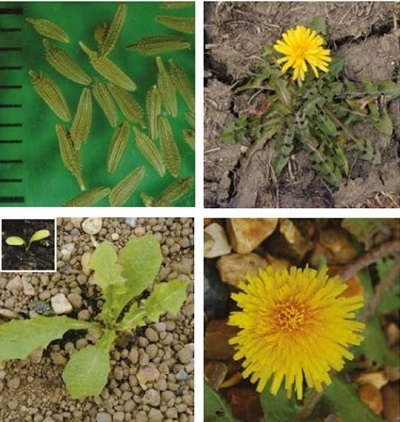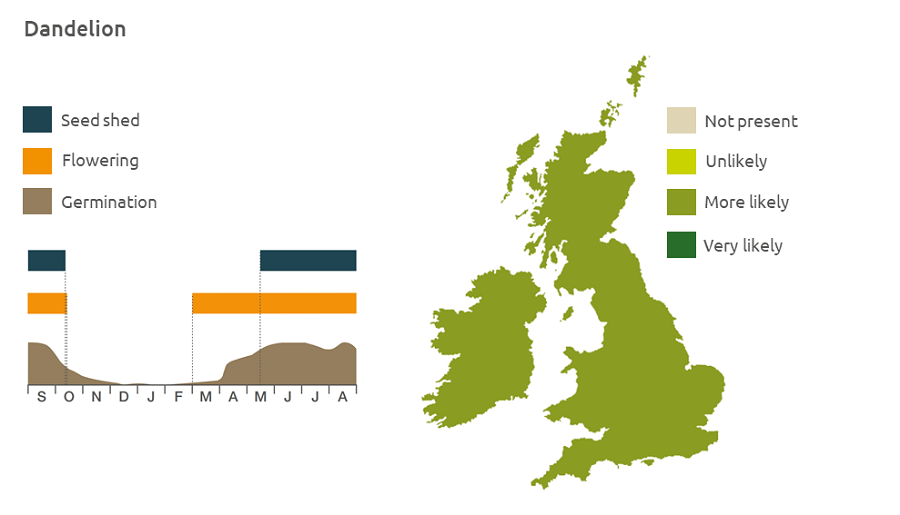- Home
- Knowledge library
- Distribution and biology of dandelion in the UK
Distribution and biology of dandelion in the UK
Dandelion is a broad-leaved weed found throughout the UK. Find out how to identify and control it.
Overview
Dandelion (Taraxacum agg.) can be found in low-growing grassland, where there is limited disturbance. Plants can overwinter as a small rosette. New leaves are produced above those of the previous season. Reproduction is by seed or by fragmentation of the long tap root. The plant is self-fertile, pollinated by insects and the fruit is wind-dispersed.
- It has value to biodiversity
Description
Dandelions are often variable and have similar micro-species. All have lobed leaves in a rosette on the ground with smooth flower-bearing stems. The flowers are large and yellow.
Key features
Plant: Stems all have a milky sap.

Location and life cycle

Geographic distribution
Dandelion has many micro-species that are difficult to tell apart.
The whole group is found throughout the British Isles up to an altitude of 1,220 m, preferring fertile, disturbed and artificial habitats.
Soil type
Dandelions are found everywhere. They are most frequent where soils have pH >7.0
Seed statistics
- Seed longevity: >5 years
- Germination depth: 2 cm
- Seed weight: 1 mg
- Seeds/head: 180
- Seeds/plant: 5,000
Management
Although found in arable crops, it is rarely a nuisance as it does not tolerate cultivation or many cereal herbicides.
For advice on herbicides, please speak with your agronomist or adviser.
When was this information last updated?
This page is based on content from the encyclopaedia of arable weeds publication. Since it was first released in 2008, the publication has been redesigned several times but not revised. However, it remains a good foundation for general information on the distribution and biology of weeds.

